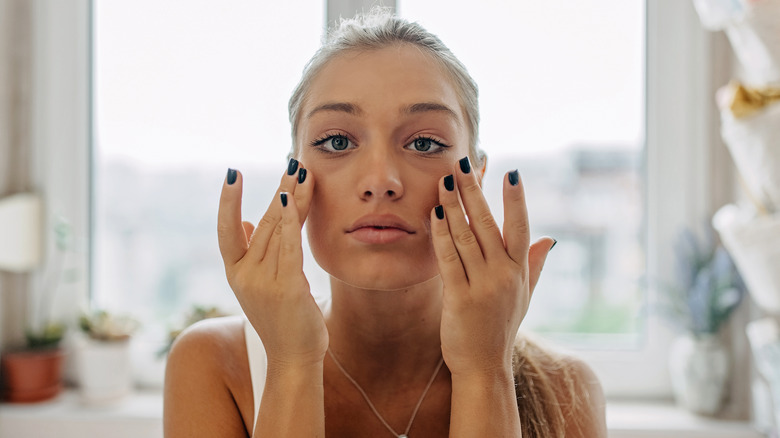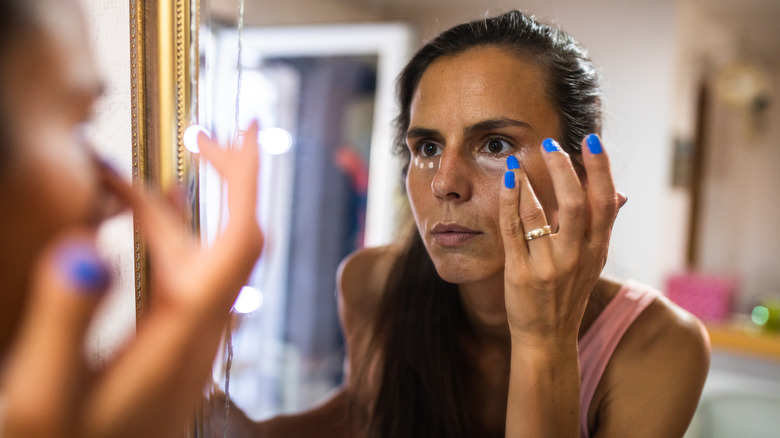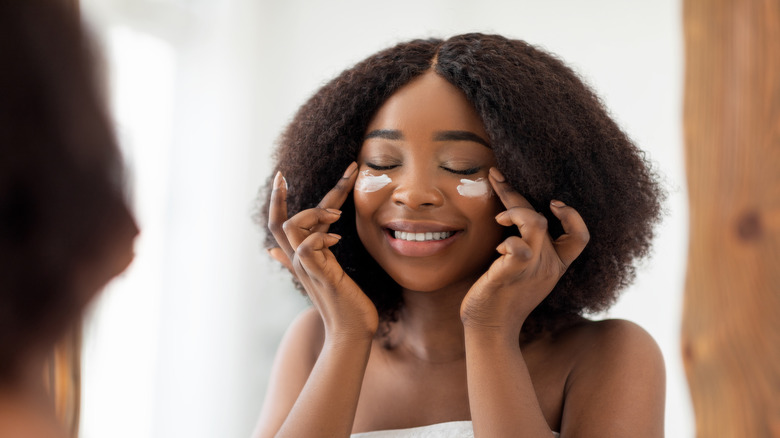Can Adding Retinol To Your Skincare Routine Help With Dark Circles?
Anti-aging skincare can seem pretty daunting these days, especially considering all the modern scientific advances and the variety of ingredients available with incredible (and increasing) accessibility. Retinol, for example, used to be one of those ingredients that was impossible to get your hands on without a prescription, while now you can walk into any skincare store and have your pick of seemingly a million retinoid products, including near-miracle-performing eye creams.
Dr. Dennis Gross himself, founder of the eponymous skincare line, called retinol "the gold-standard ingredient of anti-aging" when speaking to The Zoe Report. More than just a buzzword, retinol is a form of vitamin A that is often used in skincare products to treat signs of aging and acne and has become a viral sensation in the skincare community for both uses. But let's face it: If you've heard of retinol, you've probably heard people only gushing about its ability to smooth wrinkles and fine lines. The good news is dermatologists recommend retinol to treat dark circles in addition to the signs of aging. A 2016 study published in Cutaneous and Aesthetic Surgery confirms that retinol reduces the appearance of dark circles by promoting faster cell turnover and reducing the melanin content in the area.
What effects does retinol have on the under-eye area?
One thing to note about this ingredient is that when people speak of retinol, they typically refer to a type of compound encompassing all retinoids and not retinol specifically. People often simplify this variety of retinoic strengths, including its strongest form that needs a dermatologist's prescription, tretinoin, by calling every retinoid "retinol." To be fair, retinol is the strongest concentration of the compound you can get over the counter. Other weaker versions of it include pro-retinol and retinaldehyde. All retinoids have the effect of causing faster cell turnover and subsequently promoting collagen production to decrease the signs of aging and the appearance of dark circles.
It follows that retinol, or a gentler variation of it, would penetrate just as well when formulated in a heavier and more concentrated eye cream. This has its benefits and downsides, including faster results and higher chances of irritation caused by the ingredient. "It is important to look for a retinol eye cream that also contains moisturizing ingredients like hyaluronic acid, ceramides, and niacinamide to also nourish the skin and minimize irritation," board-certified dermatologist Marisa Garshick, MD, explains to Glamour.
What retinoid is right for you?
While retinoids are great ingredients for combating anti-aging around the eyes, from crow's feet to dark spots, you should always make sure you're selecting the best products for you and your skin. As such, knowing which retinoid strength is right for your under-eyes is the first step in your journey to younger-looking skin.
"The under-eye area is quite sensitive as it is some of the thinnest skin on the body," board-certified dermatologist Anthony Rossi revealed to Harper's Bazaar. "Therefore retinol in this area may be too irritating and can actually cause inflammation if not used correctly." To avoid unnecessary irritation, start at the lowest possible strength (pro-retinol) and work your way up. Remember that tretinoin is never recommended around the eyes.
"Most eye creams containing retinol will contain a low strength, for example, 0.1%, to allow for better tolerance," consultant dermatologist Dr. Justine Kluk told Woman and Home. "In comparison, the average starter retinol for the face tends to be around 0.3%." For extra caution, use your retinoic eye cream sparingly at a maximum of three times per week and if you find your chosen eye cream dries out the eye area, add a second moisturizer to aid the skin's moisture retention.


